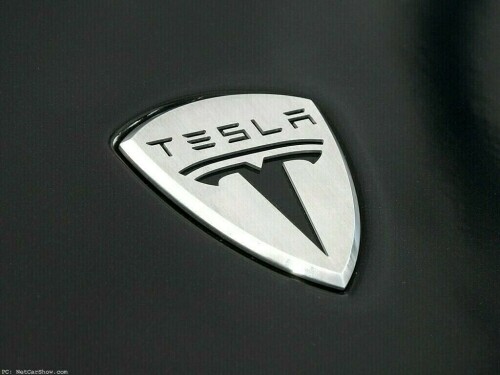Elon Musk to Reduce Time with Trump Administration, Focus on Tesla
Tesla’s Chief Executive Officer, Elon Musk, announced on Tuesday that he intends to significantly decrease the amount of time dedicated to his role within the Trump administration, commencing next month. This shift will allow him to concentrate more on managing his diverse array of companies.
This decision arises amidst growing scrutiny surrounding Musk’s involvement in the Department of Government Efficiency (DOGE), where his leadership in reducing federal positions has sparked considerable political debate, leading to persistent protests and acts of vandalism targeting Tesla showrooms.
Investors have voiced apprehensions regarding Musk’s limited engagement with Tesla, particularly as the company’s sales figures have experienced a downturn.
“The extensive effort required to establish the DOGE team and collaborate with the government to stabilize the financial framework is largely complete,” Musk communicated to analysts during a conference call.
However, he affirmed his commitment to allocating approximately 40% of his time to DOGE responsibilities.
Tesla’s stock, which initially saw a 4% increase in after-hours trading prior to the earnings call, surged by 5.5% following Musk’s remarks.
The stock’s value has diminished by almost half since its peak in December.
Following the market’s closure on Tuesday, Tesla disclosed profitability in its core automotive division, surpassing conservative projections, and confirmed its progress in developing a more affordable vehicle.
Nonetheless, the electric vehicle manufacturer indicated that it would reassess its growth projections within three months, citing the “difficulty in assessing the implications of evolving global trade policies on automotive and energy supply chains” and the potential for “shifting political attitudes to significantly impact demand for our products in the near-term.”
Trade tensions contribute to further instability. Tesla has temporarily halted certain component imports from China following the imposition of increased U.S. tariffs on the Asian nation, as reported.
China has reciprocated with its own tariffs, prompting Tesla to suspend new orders for Model S and Model X vehicles in the country.
Musk, who expressed ongoing support for reduced tariffs, acknowledged that Tesla is not resistant to “macro demand for cars,” noting that economic uncertainties may cause consumers to “postpone major capital expenditures such as purchasing a car.”
“Absent these broader economic concerns, we observe no decline in demand,” he asserted. He also mentioned that tariffs would disproportionately affect Tesla’s energy sector.
Despite a better-than-expected margin in the first quarter, fueled by cost reductions, Tesla’s automotive revenue still decreased by a fifth during this period, while net profits plummeted by 71%. Both figures fell short of Wall Street’s expectations.
Musk recognized the criticism directed towards the company but dismissed worries that brand damage had negatively impacted Tesla’s first-quarter sales.
Recent posts on Musk’s social media platform, X, suggest a gradual return to his business ventures after months focused on reducing government spending. His time away from DOGE will be divided between Tesla and other ventures, including SpaceX, xAI, and Neuralink.
Shawn Campbell, an advisor and investor at Camelthorn Investments, stated, “Increased focus from Musk on Tesla is a positive development for the stock. However, a significant upward trend would require a headline indicating Musk’s departure from DOGE to prioritize Tesla.” Campbell personally owns shares in Tesla.
Tesla has announced plans to introduce a more economical vehicle in the first half of 2025, leveraging existing platforms and production lines, after abandoning plans for a completely new, low-cost model. This cheaper car is viewed as critical for future expansion.
Tesla’s release confirmed that the introduction of affordable vehicles remains on schedule for the first half of the year. Lars Moravy, the vice president of engineering, noted that “the production ramp-up may be slower than initially anticipated,” but clarified that there were no impediments preventing Tesla from commencing production within the stated timeframe.
“The forthcoming models will be manufactured on our existing lines and will maintain a similar design to our current vehicles. The key factor is their affordability, making them accessible to a broader consumer base,” Moravy added.
A recent report indicated that Tesla’s plans for an affordable car involve a U.S.-manufactured, simplified version of its popular Model Y electric SUV, with a launch delay of several months.
Tesla also stated that the launch of its robotaxi fleet in Austin, Texas, scheduled for June, remains on track. The company is actively seeking regulatory approvals, although significant safety concerns and potential litigation risks associated with deploying unproven autonomous driving technology on public roads persist.
Regarding the timeline for robotaxi production, Musk projected millions of Teslas operating with full autonomy by the latter half of the next year.
The automotive gross margin for the first quarter, excluding regulatory credits, decreased to 12.5% from 13.6% in the fourth quarter, as per calculations, compared to analyst estimates of 11.8%.
The electric vehicle maker reported revenue of $19.34 billion for the January-March quarter, falling short of the estimated $21.11 billion, according to data.
Tesla reported earlier this month that deliveries in the January-March period slid 13%. Analysts anticipate a second consecutive annual decline in Tesla deliveries in 2025, despite efforts to boost sales through incentives like free charging and Full Self-Driving features.



Comments (0)
No comments yet. Be the first to comment!
Leave a Comment